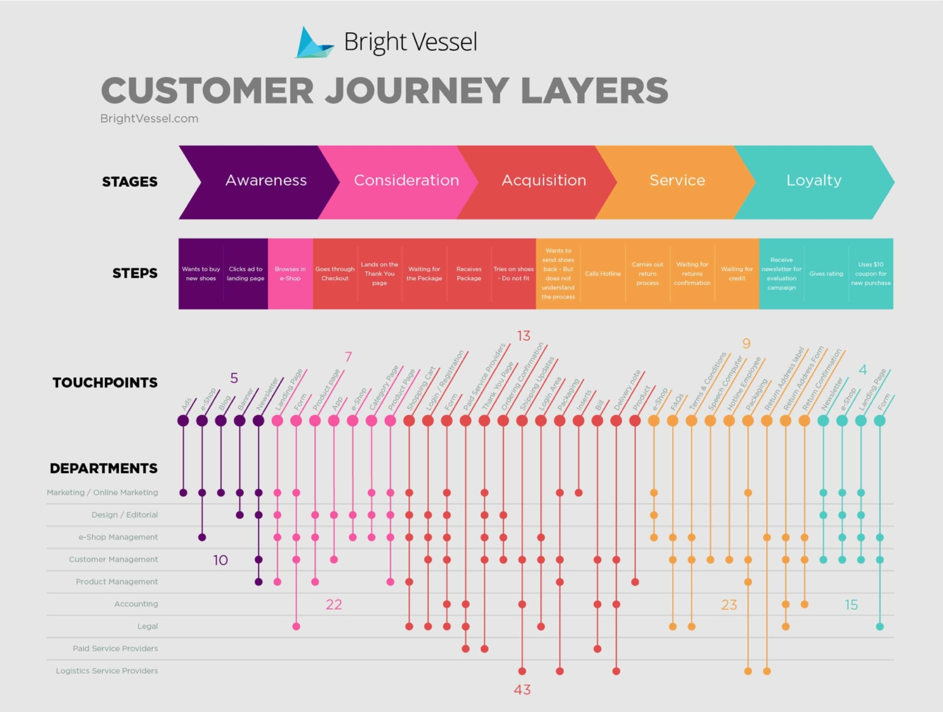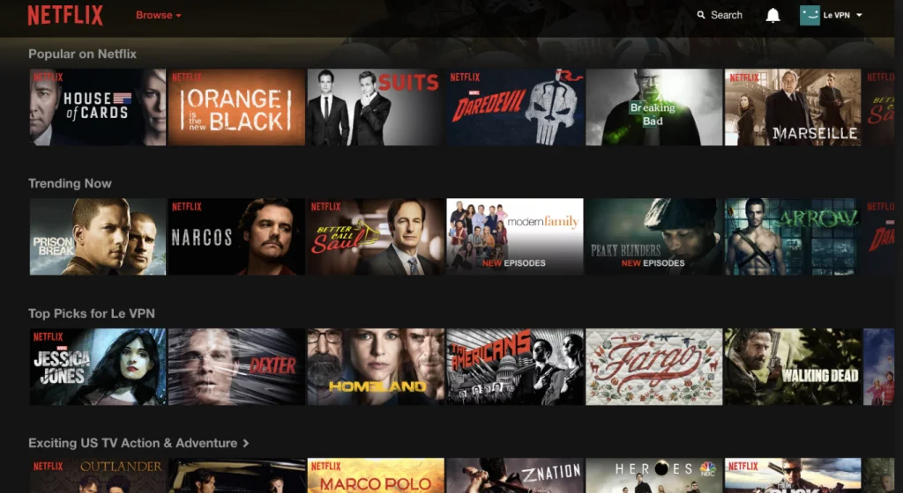Introduction to Customer Experience Design

Last updated on March 19, 2024
The relationship between businesses and their customers is changing. As companies increasingly pivot towards providing online interactions, it’s essential for your business to keep the customer experience in mind.
To do that, you’ll need to come up with a strategy for how you integrate multiple technologies to attract, retain, and delight your customers at every stage of your sales pipeline. You can accomplish this feat by focusing on your customer experience design.
What is Customer Experience Design?
The customer experience constitutes various touchpoints from the beginning, middle, and end of the customer journey. Customer experience (CX) design is the process of finding ways to leverage those experiences so they engage and thrill customers throughout the lifetime of their relationship with a brand.
By making customer-centric decisions for everything from products and services to public statements and advertising campaigns, a company can optimize the customer journey through transformative customer experiences, thereby creating a more loyal and enriching customer-brand relationship.
CX design helps organizations act more customer-focused, which in turn promotes decisions that empower, engage, and enlighten customers. Organizations that dedicate their energies to customer experience design find ways to let their customers know that they are valued, and commit to a strategy that can lead to measurable improvements in churn, retention, conversions, and ROI.
A good CX design addresses the subjective and objective needs of the customer. It acknowledges that a customer’s feelings and impressions of a brand are just as important as the money they spend on it.
The Difference Between UX and CX Design
Before we proceed, we must make a distinction between customer experience design and user experience (UX) design.
Customer experience includes all of the interactions that a customer has with your brand. This includes a customer’s first impression of your business, their feelings connected with your brand, and the likelihood that they will continue using or recommending your products and services.
Meanwhile, user experience concerns the specific, transactional interactions that a customer has with your business. UX design focuses on helping customers to navigate your website, locate your products and services, make a purchase, and contact your customer service staff.
In short, all user experiences are customer experiences, but not all customer experiences are user experiences.

UX is an essential part of CX and should feature heavily in any customer experience design. After all, any company should want people to enjoy using its products and services, which is what UX is all about. However, it is only a piece of the puzzle, albeit a concrete one.
Why is Customer Experience Design Important?
Even before the covid-19 pandemic, customer experience design ranked high on the list of strategic initiatives for many businesses.
Around 45% of professionals believe that a company’s main focus should be on optimizing CX over pricing and product design. It’s easy to understand this sentiment, given that nearly 75% of buyers indicate that they would pay more for a product in exchange for a great customer experience.

A solid customer experience helps to build brand loyalty, which in turn lowers churn and increases the lifetime value of the client relationship.
At the same time, the pandemic has made accelerating the customer experience more important than ever.
It’s difficult to stand out in a crowded space, and nowhere is this more true than in digital commerce. With more and more businesses shifting their operations to web and cloud-based solutions and given that 82% of customers will leave a brand over a bad customer service experience, there has never been a better time to consider how your business approaches CX design.

5 Key Principles of Customer Experience Design
Nurture Your Brand Identity
Most successful brands got to where they are because they took the time to develop a strong brand identity.
Your brand identity includes everything from your products to your style, marketing, customer service experience, core values, and everything else that influences how customers perceive you.
To nurture your brand identity, you have to first know who you are as a company. From there, you must find ways to express and share your identity so people instantly recognize your brand and associate it with your products or services.
Empathize With Your Customers
Customers want to believe that the brands they support care about them. Developing customer empathy is the first step to creating a deep connection with your customer, which can help foster brand loyalty, grant better insights into customer motivations, and lead to improved problem-solving.
When creating your customer experience design, keep in mind ways that you can invite customers to engage with your brand. Surveys, reviews, and feedback forms can help you collect data about how customers feel about your processes, products, and services. You can then leverage this data to make customer-centric decisions that drive engagement and boost brand loyalty.
Map the Customer Journey
The customer journey contains multiple touchpoints, each of which involves unique experiences. In order to understand this journey and the pain points that occur at each step, it helps to visualize all of the ways that a customer can interact with your brand through every stage of your relationship.
Creating a customer journey map will allow you to outline all of the opportunities and challenges present in each interaction between a customer and your brand. You can then use this information to tailor your CX design to address common pain points and identify areas where you can improve.

Personalize Communications
Never underestimate the power of personalization. 72% of customers only choose to engage with brands that use personalized messaging, which means that companies that take the time to get to know their customers can gain a serious competitive advantage in attracting, engaging, and retaining customers.
Customer experience is subjective and varies wildly depending on the interactions and touchpoints that a customer encounters during their engagement with a brand. By making personalization a part of your customer experience design, you can smooth out potential pain points that occur due to miscommunication and reduce the impact of any negative interactions.
Emphasize the Digital Experience
Gone are the days when the majority of people go to a store and conduct business face-to-face. More and more people expect to get the answer to their questions across multiple platforms quickly and easily.
By emphasizing the digital experience, you can make sure that your online integrations are created with the user experience in mind. This may include adding omnichannel communications, email and content marketing, VR or AR experiences, and any one of a number of digital solutions to make the customer’s online experience with your brand more enjoyable and rewarding.
What Does a Good CX Design Look Like?
Microsoft

It’s difficult to point to a segment of the customer experience design that Microsoft doesn’t do well. For the past few decades, Microsoft has invested heavily in making both its partners and customers feel like their opinions and input are valued.
Microsoft shares its best practices with other companies and emphasizes making its products easy to access, use, and customize.
It maintains a well-curated online and social media presence, enabling customers to interact seamlessly interact with its brand across multiple platforms. By focusing on the digital experience and empowering its customers, Microsoft ensures that its followers stay devoted to its products and services.
Adidas

Despite the decline in brick-and-mortar stores, increased competition, and pandemic-influenced shopping stoppages, Adidas has managed to weather these complications through its focus on creative customer experience design.
It all started when Adidas dedicated itself to optimizing the digital experience for its customers through the release of the Adidas App, which provides customers with a personalized shopping experience based on their behaviors and preferences.
Adidas has also empowered its customers by listening to their desires for more sustainable products with the release of the new 100% recyclable Futurecraft, Loop shoes. Decisions like these help to curate Adidas’s brand identity as a company that cares not only about the planet but also the feelings and desires of its customers.
Netflix

Few companies use personalized communication better than Netflix. The popular streaming service makes personalization a core tenet of its customer experience design, which has helped to fuel its atmospheric ascent.
Using sophisticated artificial intelligence, Netflix takes customization to a whole new level by presenting customers with tailored playlists based on their viewing history. In addition, it provides each title with a score that measures how likely it is that the viewer will enjoy watching that program.
Netflix diligently tracks how often – and how long – viewers watch each title and uses this information to promote certain programs and develop new content. Through their viewing behavior, Netflix customers directly impact the programming that is available on its platforms, which drives increased engagement and provides a more empowering customer experience.
Why Customer Experience Design Matters
The current trends in customer experience design point to its increasing importance in helping businesses to distinguish themselves from their competitors.
CX design turns customer insights into a resource that your business can leverage to raise your brand recognition, reduce pain points, and fuel financial growth. If you invest time identifying your brand identity, empowering clients, mapping the customer journey, personalizing communication, and optimizing the digital experience, you can take your CX design to the next level and strengthen the relationship between your company and customers.